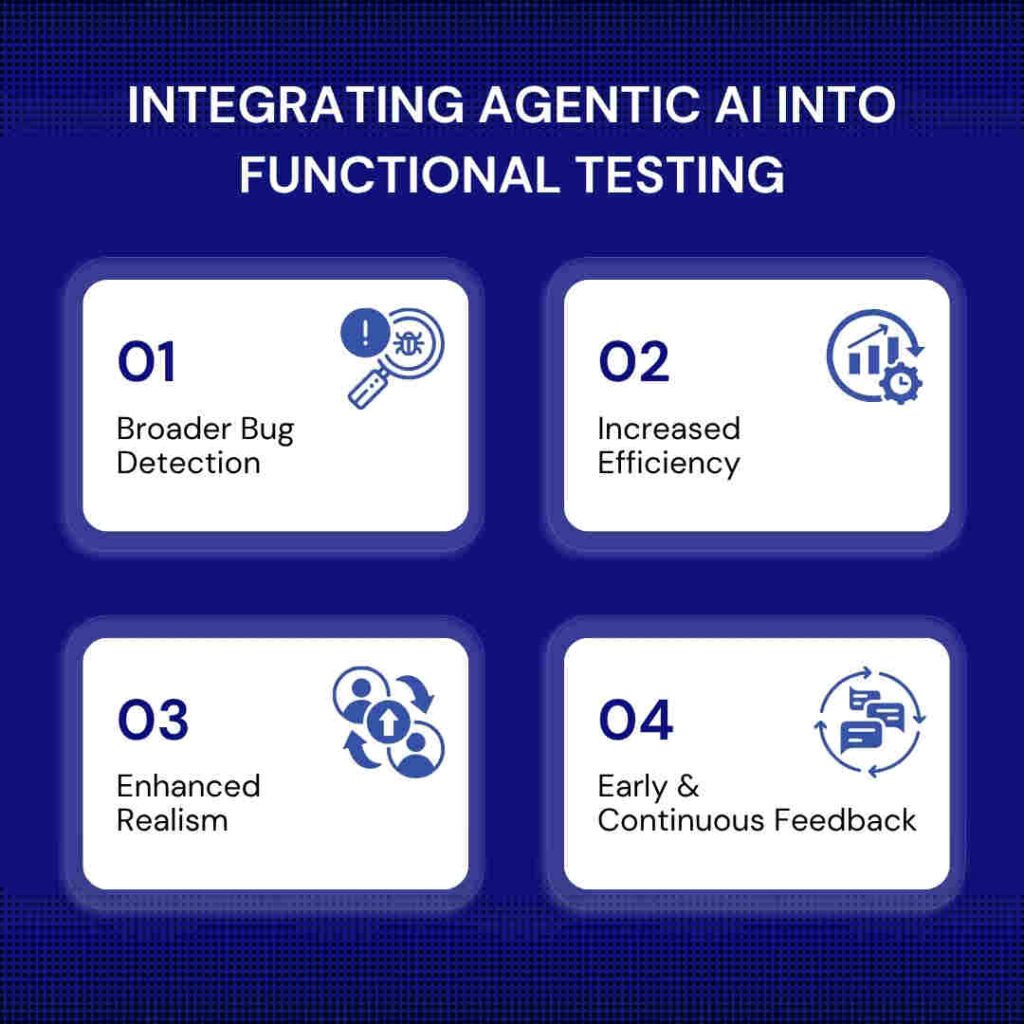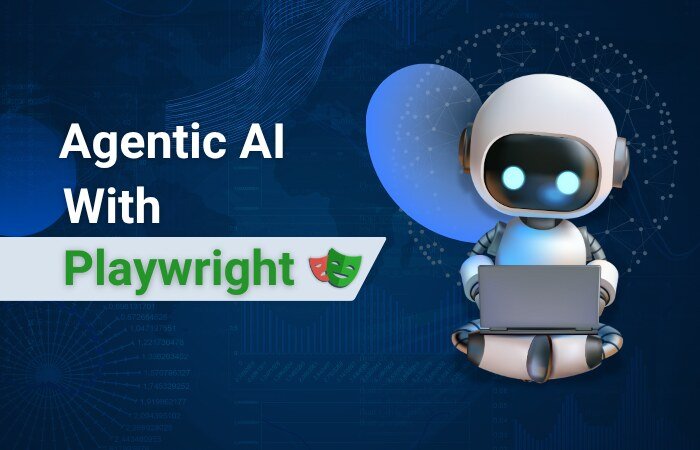The world of test automation is on the cusp of a revolution, and its name is Agentic AI. While traditional automation diligently checks for known issues, it often misses the unexpected bugs that a human tester would spot in an instant. This is where Agentic AI steps in, not as a replacement, but as a powerful collaborator, adding an intelligent “extra set of eyes” to your existing testing workflows. If you’re using Playwright, you’re in luck. Integrating this next-generation AI testing service is easier than you think.
This post will guide you through the exciting landscape of Agentic AI and show you how to leverage it within your Playwright tests, transforming your test automation solutions and empowering your QA engineering services.
What is Agentic AI and Why Should You Care?
Imagine an AI that doesn’t just execute predefined scripts but actively explores your application, thinks like a user, and identifies potential problems on its own. That’s the core idea behind Agentic AI. These AI “agents” are autonomous entities that can perceive their environment (your web application), reason about what they see, and take actions to achieve a goal, such as finding bugs.
The benefits of integrating Agentic AI into your functional testing services are substantial:

- Broader Bug Detection: AI agents can catch a wider range of issues beyond what’s explicitly coded in your test scripts. This includes visual glitches, usability problems, and content inconsistencies that traditional automation often overlooks.
- Increased Efficiency: By automating the more exploratory and nuanced aspects of testing, you free up your manual testers to focus on more complex and strategic tasks.
- Enhanced Realism: Agentic AI can simulate user behavior more realistically, uncovering issues that only emerge from genuine user interaction patterns.
- Early and Continuous Feedback: With AI agents running alongside your regular test suite, you get continuous feedback on a broader range of quality aspects throughout the development lifecycle.
The Power of an AI Co-Pilot for Your Tests
The primary advantage of integrating an AI agent is the ability to catch bugs that you didn’t think to write a test for. Traditional automated tests are excellent for regression checking – ensuring that what worked yesterday still works today. However, they struggle with the unknown unknowns.
An Agentic AI can identify issues such as:
- Visual and UI/UX Flaws: Detects misaligned elements, inconsistent design patterns, and other visual bugs that can degrade the user experience.
- Content and Copy Issues: Spots typos, grammatical errors, and inconsistencies in the text across your application.
- Accessibility Concerns: Identifies common accessibility problems, helping you build more inclusive web applications.
- Basic Security Vulnerabilities: Flags potential security red flags that standard functional tests might miss.
- Performance Bottlenecks: Points out elements or interactions that could lead to a sluggish user experience.
By adding this intelligent layer of analysis, you bridge the gap between the meticulousness of automation and the intuitive, exploratory nature of manual testing.
Getting Started: A Simple Integration
One of the most compelling aspects of this new wave of AI testing services is the ease of integration. You can augment your existing Playwright test suites with AI capabilities with minimal code changes. Here’s a conceptual overview of how it works:
- Set Up Your Environment
First, you’ll need to have your standard Playwright environment ready. The AI integration typically involves importing a lightweight library that extends Playwright’s core functionalities. You will also need to configure your API key for the underlying large language model (LLM) you choose to use, such as OpenAI’s GPT models.
| export OPENAI_API_KEY=’your-api-key’ |
- Augment Your Playwright Scripts
Once your environment is set up, you can invoke the AI check with a single line of code within your existing tests. The AI agent will then take a snapshot of the current page and perform its analysis.
Here’s a simplified example using Python and Playwright’s asynchronous API:
| from playwright.async_api import async_playwright import your_ai_testing_library # Import the AI checking library # Your existing Playwright test async with async_playwright() as p: browser = await p.chromium.launch() page = await browser.new_page() await page.goto(‘https://example.com’) # Add AI checking with one line result = await page.ai_check() print(f”Found {len(result.bugs)} issues”) |
- Review and Report
The AI agent will return a structured list of potential issues it has identified. These findings can then be automatically compiled into a detailed HTML report, complete with screenshots and descriptions of each bug. This makes it incredibly easy to visualize the issues and share them with your development team for remediation. Imagine generating a comprehensive bug report from a single command – that’s the efficiency AI brings to your QA engineering services.
Expanding Horizons: Advanced Use Cases
Agentic AI in testing is applied much beyond bug detection. These are some of the creative application examples of this technology:
- Natural Language Test Case Execution: AI agent is able to read test cases in plain English, explore the application, and confirm the UI/UX behavior without manually-scaffolded steps.
- Competitive Analysis: Deploy an AI bot to crawl competitor sites and collect intelligence on their pricing, product changes, or content marketing. Then, get a summed-up account of the results.
- Dynamic Form Interaction: Based on predefined user profiles, the agent can fill out complicated and advanced forms intelligently to generate leads, apply to a job, or register as a user.
- Automated Layout and Responsiveness Testing: Automatically detect changes in layout, identify broken components, and ensure a seamless experience across different mobile and desktop viewports.
The Future is Collaborative
The inclusion of Agentic AI into Playwright is a community-based initiative to bring powerful testing features to all automation engineers. Although commercial test automation tools with even more impressive capabilities exist, the open-source trend in testing ensures that the essential AI-testing advantages are not held hostage by a paywall.
The idea is straightforward: enable automation engineers to create more thorough and smart test suites with little overhead. You may be a test manager with a small suite of tests to maintain, or an automation enterprise-level suite of tests to maintain. In either case, an AI co-pilot can assist you in finding critical issues that you may not find using traditional techniques.
As this technology matures, we will likely see additional language support, testing personas, and even more advanced reporting. The path towards smarter, more efficient, and more accessible test automation solutions is being paved successfully, and Agentic AI is among the first to show the way.

Software Testing Lead providing quality content related to software testing, security testing, agile testing, quality assurance, and beta testing. You can publish your good content on STL.



